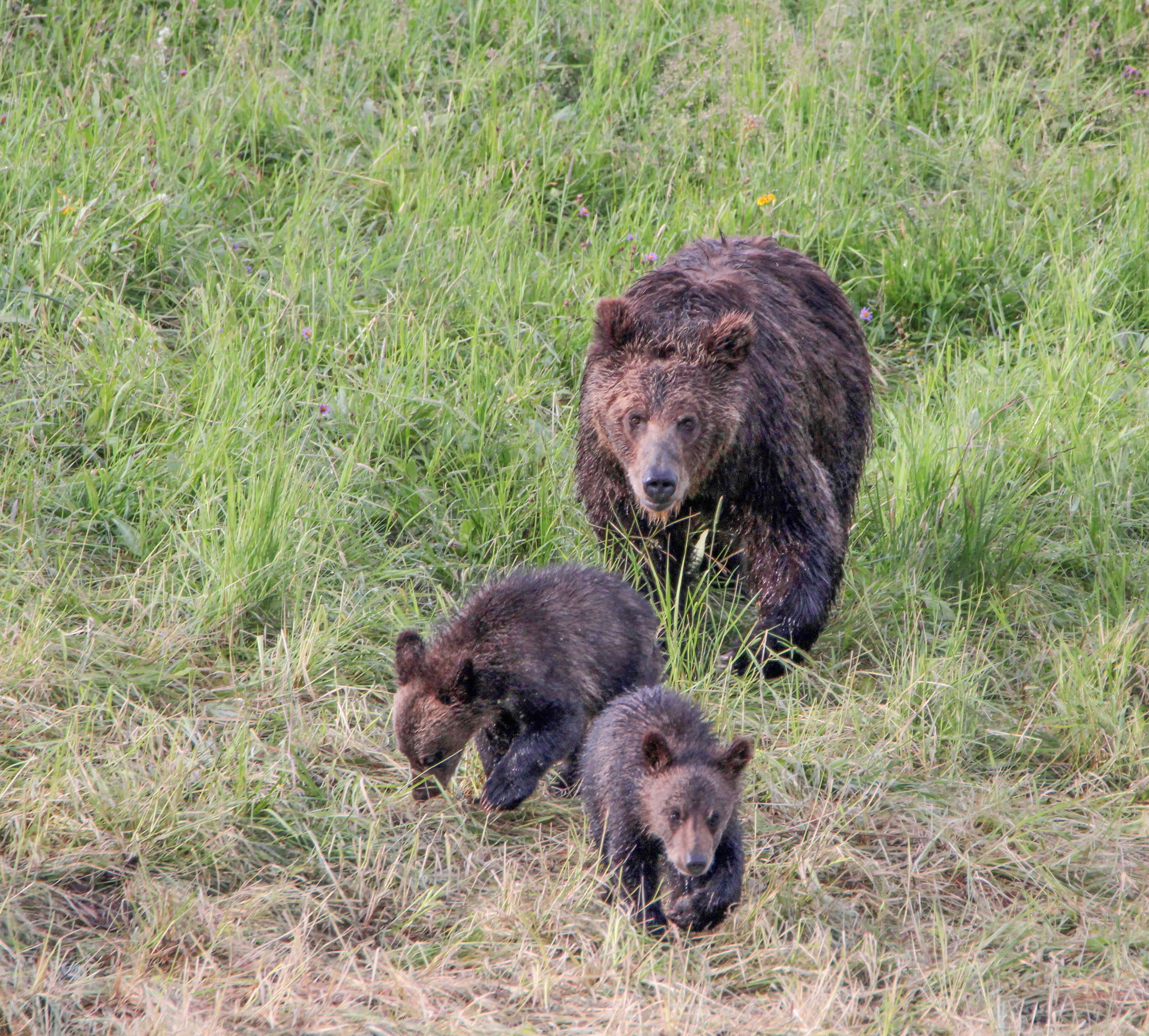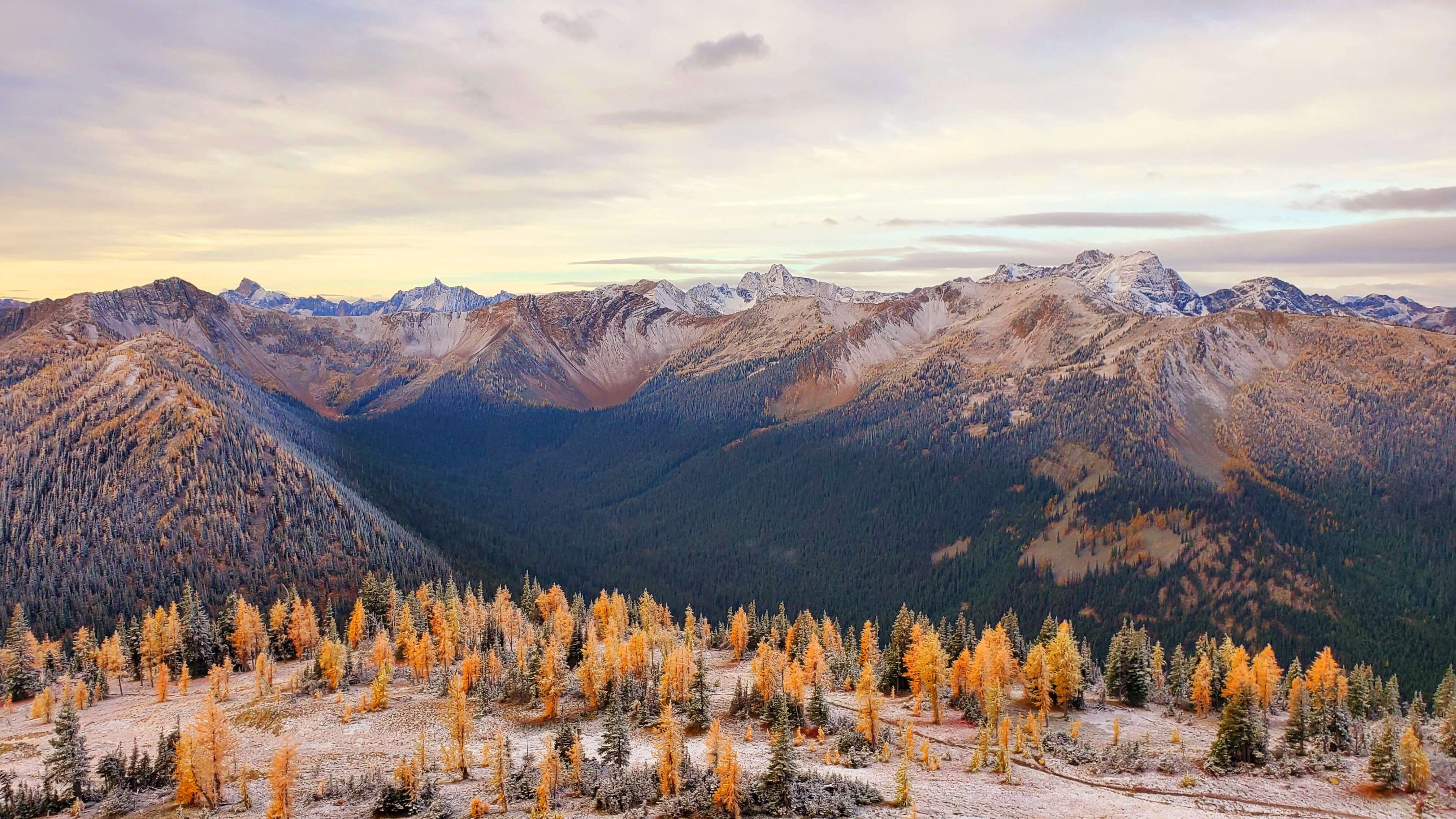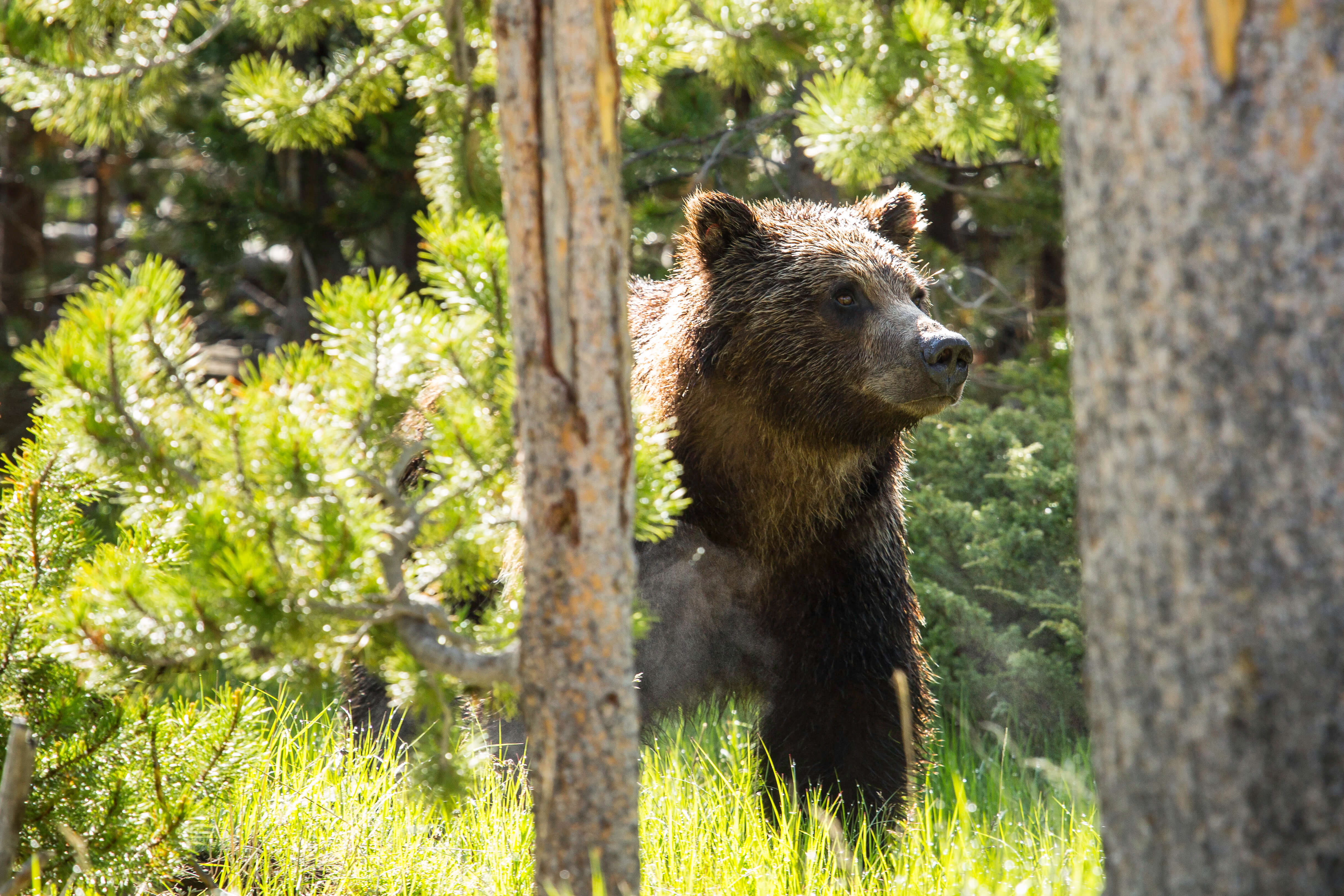
An Opportunity to Return Grizzlies to the North Cascades
The National Park Service and U.S. Fish and Wildlife Service are restarting the Environmental Impact Statement (EIS) process required to return grizzly bears to the North Cascades Ecosystem. Due to extensive hunting and trapping in the 19th and 20th century, grizzlies were extirpated from the North Cascades by the 1960s. We now have the opportunity—and the responsibility—to bring them back. Today, the North Cascades is one of the few remaining places suitable for grizzlies. Due to their isolation from other grizzly habitat in British Columbia and a very low reproductive rate, grizzlies will not recover in this ecosystem on their own. They need our help.

The North Cascades is Ideal Grizzly Habitat
The North Cascades contains some of the best habitat for the bears in the lower 48. The ecosystem includes over 9500 square miles of mostly public land that is ideal for restoration. When biologists were evaluating potential food sources for bears in the North Cascades, they looked at the available research on bear diets and developed a list of 124 plant species they feed on. They found that 100 of the 124 species of plants that are bear foods occur in the North Cascades. Under almost every climate model, grizzly habitat will only increase in the North Cascades with climate change. Having a healthy bear population will increase biodiversity of the ecosystem which will add resiliency in the face of rapid climate change.

Rural Communities can Coexist and Thrive Alongside Grizzly Bears
Rural communities very similar to ours already coexist and thrive alongside grizzly bears. Successful preventative coexistence measures include: bear-proof garbage, electric fencing, carcass composting programs, and range riding.
The Greater Yellowstone Ecosystem which includes Yellowstone Park supports over 1100 grizzlies today, far more than the 200 that the North Cascades may support a hundred years from now. Nearly 5 million people visited Yellowstone in 2021. With so many people and bears, grizzly encounters and especially attacks in Yellowstone have remained very rare.
Comment on the Draft Restoration Plan!
The National Park Service and U.S. Fish and Wildlife Service have released a restoration plan and draft Environmental Impact Statement (DEIS) with a 45 day comment period that ends on November 13th. We encourage you to give the agencies feedback during this comment period. You can read the plan and submit a comment here.
Alternatives in the Proposed Restoration Plan
Alternative A: The no action alternative. The agency would continue managing for natural recovery of grizzlies.
*Due to their isolation from other grizzly habitat in southern British Columbia and a very low reproductive rate, grizzlies are very unlikely to re-establish a healthy population on their own. To return them to the North Cascades we need an action alternative.
Both alternatives B and C are action alternatives:
Alternative B: Under both action alternatives, 3-7 bears would be released per year over 5-10 years until an initial population of 25 bears is achieved. After this, adaptive management would be used to manage the bears.
Alternative C: This is the alternative that MVCC supports. The same number of bears will be reintroduced as in Alternative B but agencies will be able to manage bears with the 10(j) rule which will give them more management flexibility. Learn more about the 10(j) rule below.
10(j) Rule
The 10 (j) rule is a stipulation under the Endangered Species Act that allows grizzly bears to be released as a non-essential experimental population. This is a special designation for a group of plants or animals that are restored in an area that is geographically isolated from other populations of the listed species. This provides federal, state and tribal agencies with far more management options flexibility when any conflict situations arise, including deterrence, preemptive relocation to prevent conflict or break habituated behavior, and, if there are no other options, lethal removal of the bear.
While we are supportive of releasing bears under 10(j) rule, we are critical of a provision in it: the option for agencies to give conditioned lethal take authorization to a landowner. In this situation, once other deterrence or relocation options are exhausted, we would like to see problem bears handled by local management agencies, not private landowners. The 10(j) rule has a separate comment portal, also open through November 13, where you can comment on the details of the rule.
A Coalition Effort
MVCC is an active member of the Friends of the North Cascades Grizzly Coalition which was formed in 2015 when North Cascades National Park began planning for grizzly restoration efforts. The coalition has grown to include over 40 partner organization, 3,600 individual donors and has recruited over 160,000 comments in support of grizzly bear recovery. For detailed information and updates about the grizzly recovery process visit the Friends of the North Cascades Grizzly website.
The Friend of the North Cascades Grizzly Coalition has compiled a comprehensive list of answers to frequently asked questions about grizzly bears. If you have more questions we encourage you to contact our Wildlife and Public Lands Coordinator, Madelyn Hamilton at madelyn@mvcitizens.org
